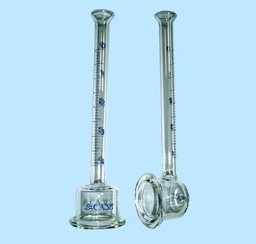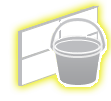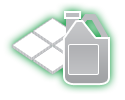
Place an order for goods, hold and consultation: +7 (985) 258-30-26 sales@sazisealants.com
1. Purpose
A quality of hydrophobization depends on how good the construction material is protected against water penetration. For instance, the façade surface made of ceramic face bricks absorbs up to two liters of water from one square meter in the space of an hour under heavy rain and wind, but after applying organosilicon water-repelling agents in the same conditions the amount of absorbed water goes down to 0.1 liter per one sq. m. Such sharp decrease of water absorption by the surface is sufficient for protection of stone building structures against water.
But the practice requires a workable and reliable method to check the quality of hydrophobization. A well-known method to check the efficiency of hydrophobization by analyzing the behaviour of water droplets on the surface, i.e. through visual assessment of the droplet wetting angle (what is known as a beading effect) is incorrect. It shows only the presence of a waterproof film on the outside edge of the treated surface and does not make allowance for the water pressure impact (e.g., under heavy rain and wind) on the penetration of moisture through this edge.
For further details visit section Articles on the site: The dew effect as a method to evaluate the water repellent property of the construction material surface.
The Company’s scientists have developed, repeatedly tested and recommended to use their method to check the efficiency of a water-repelling agent with the aid of the Karsten tube (left photo).
The height of a liquid column in this device is equal to 100 mm, which corresponds to the pressure force of rain drops when the wind speed exceeds 120 km/hour. This can be compared with conditions of a storm, therefore the waterproofing capacity will be rather high for a standard upkeep of buildings when a facility is checked with the help of this method.
2. Equipment, aids and appliances
There are two variants of the device: one is meant for horizontal surfaces and the other – for vertical ones. It is made up of a glass bell jar 30 mm in diameter with a built-in 10 ml graduated tube (corresponds to 10 cm H2O). One graduation correponds to 0.1 ml. The tube is bonded to the surface under test with plasticine (sealant), then water is poured into it and the level change is monitored during two hours.
3. Procedural path
1) Remove dust from the surface patch;
2) Treat the surface with the water-repellent agent as prescribed by instructions;
3) Leave the treated surface intact for at least three days;
4) Fasten the Karsten tube to the surface with the help of the sealant (plasticine), applied along the perimeter of the bell jar, to ensure a tight joint;
5) Pour water to zero graduation line (mark) and shut it up tight with any cover to prevent water evaporation;
6) Watch water level falls as time goes by (after 2 hours).
4. Appraisal of results
The quality of water-repellency treatment should be considered satisfactory if two hours of treatment reduced the height of water by not more than:
- 3 graduation lines (0.3 ml) for the ceramic/clinker brick and natural stone;
- 5 graduation lines (0.5 ml) for concrete/cement-sand surface.
5. Comparative evaluation
This method also helps determine how much the water absorption capacity of the construction’s surface has reduced. To do this it is necessary to take measurements of the non-hydrophobizated (reference) surface, and then calculate the water absorption capacity reduction with the help of the following correspondence (Δ):
Δ = Vref / V, where
V – water absorption capacity of the treated surface, ml;
Vref – water absorption capacity of the reference surface, ml.
Back to catalog Place an order











